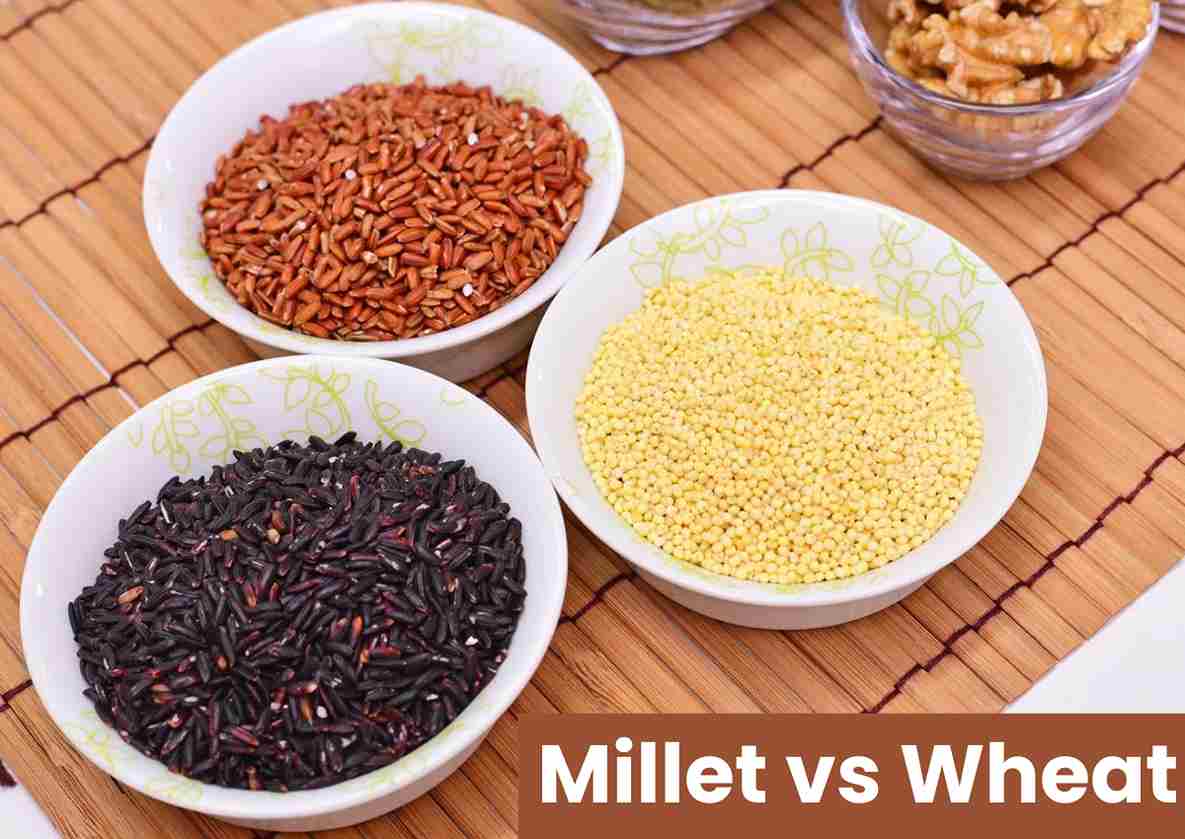Millet vs Wheat: Without bread, the food of many people remains incomplete. Wheat flour is generally used in almost every Indian household to make rotis. However, due to the increasing popularity of millets in recent times, some people have started including millets roti in their diet.
In such a situation, today in this article we will know which is healthier wheat and millet.
Millet vs Wheat Roti
Millet vs Wheat: Roti is a major part of the Indian diet. Without this, the food of many people remains incomplete. Generally, people use wheat flour to make roti. However, due to the increasing popularity of millets in the recent past, many people are now preferring to eat millet rotis.
Many people believe that rotis made from millet flour are more beneficial than wheat rotis. If you are also confused about this, then today in this article you will know which flour roti is healthier, wheat or millet.
Wheat Bread
Wheat is a popular grain, traditionally used to make bread. This grain is a good source of dietary fiber, which aids digestion, maintains bowel regularity, and helps keep you feeling full for a longer period. Besides, it is also rich in essential nutrients like B vitamins, iron, magnesium, and phosphorus, which are beneficial for health.

Millets Bread
The group of grains like millet, ragi, and jawar are called millets. For some time now, it has emerged as a nutritious alternative to traditional grains across the country. They are naturally gluten-free, making millet bread a better choice for individuals with gluten sensitivity or celiac disease.
They are rich in nutrients like fiber, iron, calcium, magnesium, and antioxidants, which add nutrition to your diet. Not only this, it has a lower GI than wheat, which helps in managing blood sugar levels and reducing the risk of type 2 diabetes.
Gluten Content: Millet vs Wheat
Being gluten-free, millets prove to be a better option for people with gluten sensitivity or celiac disease. Wheat, on the other hand, contains gluten. In such a situation, wheat is beneficial for most people, but millet bread may be a more suitable option for people with gluten-related disorders.
Effect on blood sugar: Millet vs Wheat
Due to low glycemic index, millet roti emerges as a better option to maintain stable blood sugar levels. At the same time, wheat bread, even though it is a part of a balanced diet, can have a relatively large impact on blood sugar, making it important for people trying to manage blood sugar levels to consider it.
Weight Management: Millet vs Wheat
Due to the high fiber content in millets, they keep you full for longer periods, potentially aiding weight management. Similarly, wheat roti, being a good source of fiber, also helps you feel full, making it perfect for people who focus on controlling their weight.
Heart Mind: Millet vs Wheat
Millet’s roti, due to its rich content of nutrients like magnesium and potassium, contributes to heart health by helping to regulate blood pressure. These minerals, combined with the fiber content, may help reduce the risk of cardiovascular problems. Meanwhile, grain breads, especially heart-healthy grains like oats and barley, may have a positive effect on overall heart health by reducing cholesterol levels.
Wheat or Millets: Which is Better?
As it is clear from the above comparison both wheat and millet are beneficial for health. Both types of rotis have their distinct specialties. In such a situation, if you are looking for a healthy option to include in your diet to stay healthy, then you can make either millet or wheat a part of your diet because both are beneficial for health.
Disclaimer: The advice and suggestions mentioned in the article are for general information purposes only and should not be taken as professional medical advice. If you have any questions or concerns, always consult your doctor.



